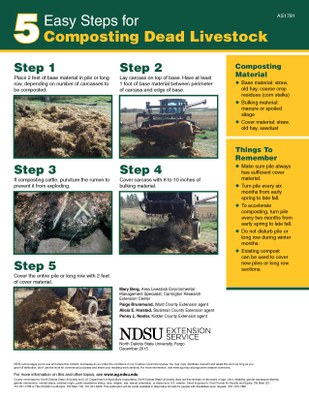Animal Mortality Management
Animal mortality losses are a normal part of livestock and poultry production. Safe disposal of carcasses is an important issue for day-to-day, routine management of livestock and poultry mortalities to prevent disease transmission and to protect air and water quality.
Composting Animal Mortalities
Background
Compost is a mixture of organic residues (manure, animal carcasses, straw, etc…) that have been piled, mixed and moistened to undergo thermophilic (high heat 120-160 degrees F) decomposition. The high heat sterilizes pathogens and seeds that are present in the pile. Pests (rodents/insects) should not be present. Volumes may be reduced by 2/3. Composting requires routine mechanical turning to introduce oxygen. Turning the compost allows aerobic microorganisms to feed on the organic components and convert the pile to a fairly stable nutrient rich soil amendment.
Process
1. Site Selection: Composting should take place on an area that drains well and where runoff will not reach surface waters. Also, the pad should not be susceptible to ground water pollution by leaching.
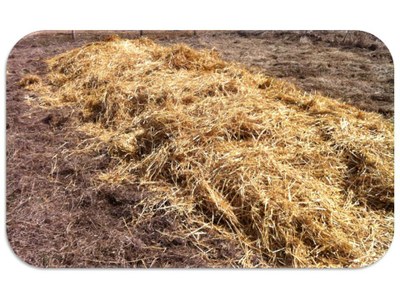
2. Base Material: 2 feet of base material should be placed on the site where composting will take place. Base materials may include straw, old hay, sunflower hulls or sawdust. Base material should have a high carbon:nitrogen (C:N) ratio.
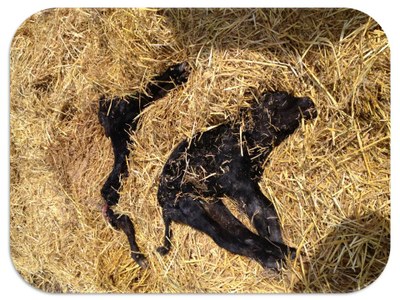
3. Mortality Placement: Place mortality on top of base material. There should be at least 1 foot of base material between the perimeter of the carcass and the edge of the base.
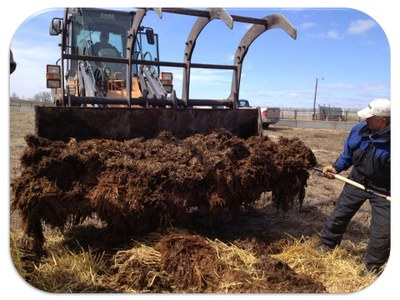
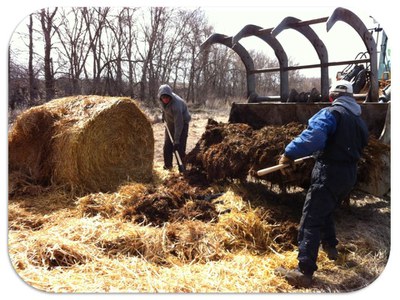
4. Bulking Material: Cover the mortality with 6-8 inches of bulking material consisting of manure, finished compost or spoiled silage.
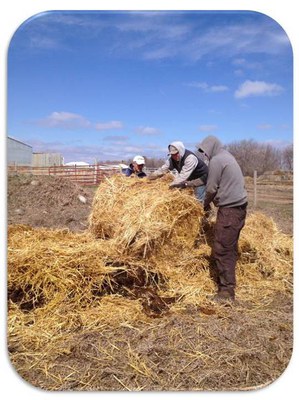
5. Cover Material: Place 2 feet of cover material on top of the mortality and manure. Cover materials may include straw, old hay, sunflower hulls or sawdust. Cover material aids in trapping heat for the pile as well as keeping predators out. Cover material should be maintained throughout the composting process.
Maintenance
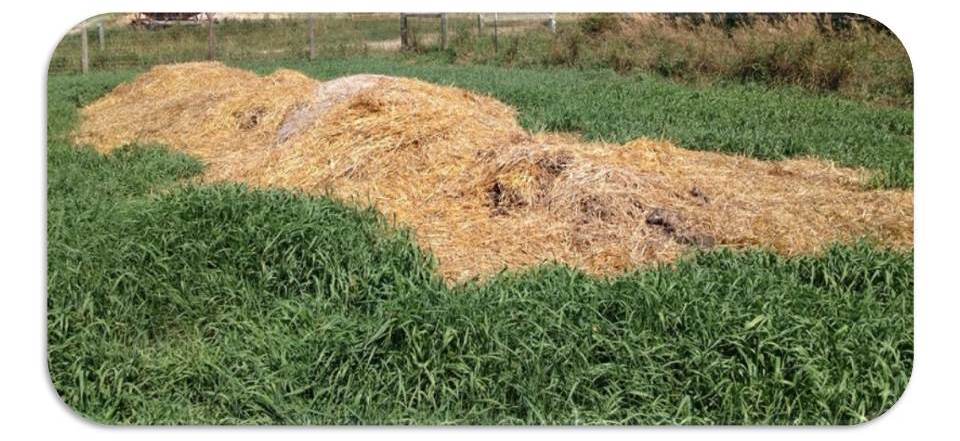
The amount of time it takes for a mortality to compost depends on the size and maturity of the animal. Compost completion time also depends on the amount of time the producer wants to put into maintenance. Piles/windrows can be left unaltered for 6-8 months or aerated every 2 months. However, at some point during the process, air must be reintroduced to maintain the bacteria that are necessary for the composting process to occur. We recommend aerating the pile every 2 months from early spring until late fall and leaving the pile static during the very cold winter months.
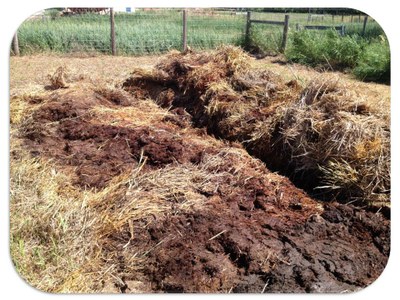
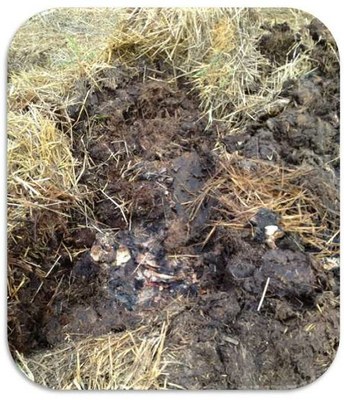
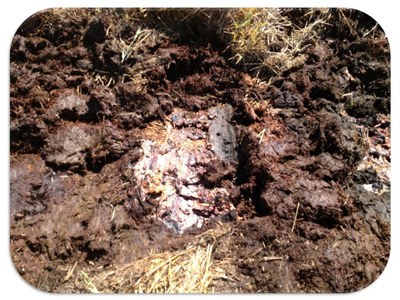
The pictures from the "Process" section of this page are showing the process of composting newborn beef calves. The pile was started on May 1st. The pictures above show what was found when the pile was opened on July 8th. Almost all the soft tissue and hide were decomposed. The pile was completely aerated using a tractor with a loader and the cover was reestablished. Only brittle bones were found (pictured below) when the pile was opened again on August 27th. The composting process was considered complete and the product will be land applied next spring. The final product contained 13 lbs. total N/ton compost, 6.1 lbs. P/ton compost and 14 lbs. K/ton compost.
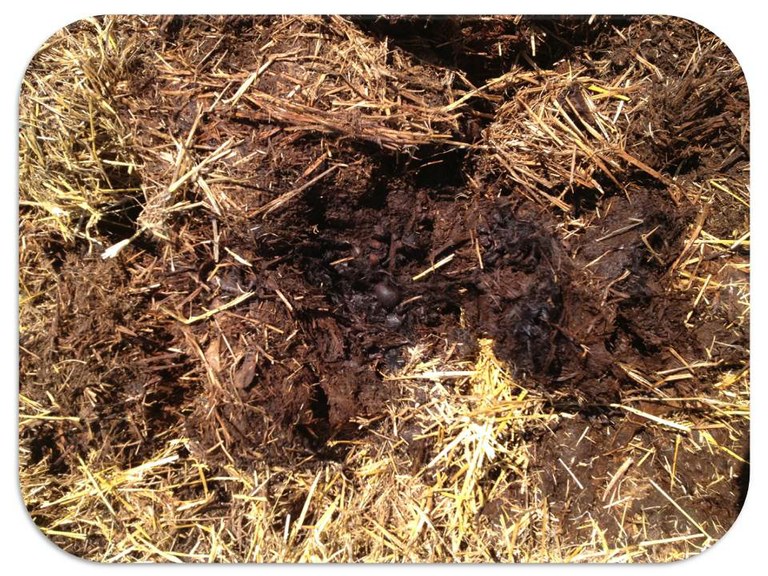
Approved methods of mortality management in North Dakota include composting, burial, rendering and incineration.
- North Dakota Century Code excerpt pertaining to animal mortality management: North Dakota Animal Mortality Management Rules and Regulation
- Livestock and Poultry Environmental Learning Center: Managing Livestock and Poultry Mortalites

